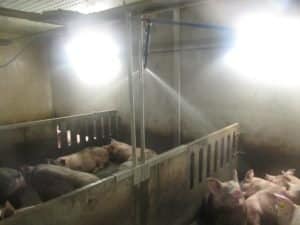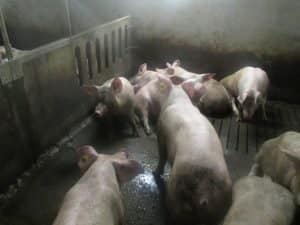Climate is the average weather condition over a period of several decades or longer. A key parameter in this is temperature. Apart from annual seasonal variations in weather patterns, climate is subject to change. Current climate change is manifested, among other things, by global warming, which is becoming increasingly noticeable. This warming is considered one of the most important problems currently facing the Earth.


Consequently, for Flemish pig farming, this also means an increase in heat stress in pigs. Despite the fact that pigs are more tolerant than other animal species such as poultry, more attention needs to be paid to the causes and possible solutions to combat heat stress.
Heat stress occurs when the organism experiences stress when exposed to high ambient temperatures. As a result, the organism cannot lose sufficient heat and the metabolism no longer works optimally. The animals become less productive and/or sick. This phenomenon is immediately visible and measurable.
A distinction is made between one-off heat stress and daily heat stress. This is because the animals' response to heat stress depends on the duration and intensity of the heat. In the case of acute heat stress, body temperature will rise more rapidly to critical values. In countries, such as Belgium, where the climate is temperate, short-term changes can be observed. On a hot summer day, the temperature in a Belgian pigsty can reach high levels even with an optimal ventilation system.
Physiological , behavioural and immunological changes are necessary to survive a heat period. During heat stress, feed intake is generally reduced earlier. Consequently, this is also the case for mineral intake through feed. In addition, some of the minerals present in the body are lost, especially potassium and sodium due to panting. One of the important pillars of this project will therefore be to restore these mineral levels and vitamins in the best possible way.
As mentioned in the previous section, animal behaviour is subject to heat stress. Under thermoneutral conditions, fattening pigs lie for 90 % of the day. Pigs may lie laterally (sideways) or sternally (on sternum). On hot days, pigs change from a sternal lying position to the lateral position. Moreover, the animals avoid any physical contact when the ambient temperature is too high. Visually, the pig farmer can therefore see when the pigs adopt an uncomfortable position. Animal welfare, like in many research projects, will also become an important pillar in this project.
Wallowing in manure and urine is also more common if the temperature increases. This phenomenon can also be observed in feral pigs and has two purposes. The first purpose is to coat the body with a layer of mud. This layer serves to protect itself from external parasites. The second purpose is to increase evaporative heat losses at high temperatures. Nevertheless, pigs will initially try to avoid lying or burrowing in their own excreta as much as possible. That is, a pig will start to burrow only when the natural desire for contact with excretions has been removed.







